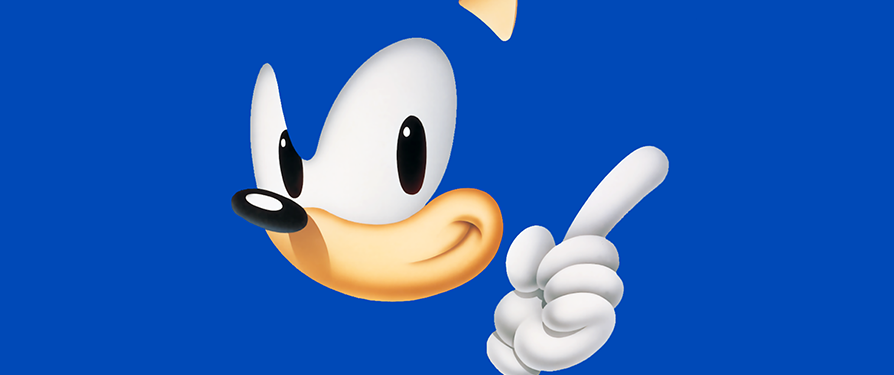NB: Article written by Kieran Butcher, proof-read by Christian Senn.
Senn took four weeks to prepare the demos for SEGA executives and Sonic Team. This was one of many hurdles that could make or break the project; if the demo didn’t manage to impress the executives then it would have been terminated, and if it did impress, then it would mark the start of a long and arduous journey.
Understandably Senn didn’t sleep much during the four week development, but it was the inspiration provided by Michael Kosaka’s original game design and the music track ‘Stardust Speedway-bad future’ (from the Sonic the Hedgehog CD soundtrack) that gave him the creative energy to complete his task. In fact Senn was so inspired by the music that he decided to include it in both of the test demos.
Senn produced both demos on his Amiga 3000 using Imagine 3.0 and DeluxePaint Animator. The demos weren’t playable, both were merely pre-rendered animations.
At this particular time Sonic had never appeared in a truly 3D game before, and the game’s ‘pitch’ was based on this premise. Senn set out to create a game that would have a visual appeal, a wow factor. In Senn’s own words:
“The intended audience… wanted to see something that would take Sonic someplace new… they wanted dollar signs in their eyes. It was supposed to be playful, fun and colorful. Granted, all the 3D was flat-shaded and didn’t/doesn’t look that impressive, but I think the cleanliness and colors keep it charming in a simple way. Overall, it still shows some basics of Sonic moving around in 3D… The assumption was that if we could visualize the slower, more tedious gameplay, we could definitely have fast sections that went by in a blur…”
Demo 1:

Senn created this demo in two halves. The first half was the animation of the level itself. Later he overlaid the HUD, for which every ring and second that past was manually animated.
“I’d already designed some enemies… and went ahead and modeled those in 3D using an Amiga 3000 and the software Imagine 3.0. I’d already modeled Sonic for use in a demo prior to this one (a bonus round design concept of Michael Kosaka’s). The entire rendered scene was blocked out so it had a small view rectangle so that the rest of the space would be filled in with a HUD I’d design/draw later. I designed a simple 3D playground and planned a route for Sonic to run, coming up with environmental hazards (like the spike plate, the pumping platform, etc.) along the way. I had to tweak Sonic’s orientation each frame, too. (oy) Since I was working with 8-bit (256 colors), I needed to have the 3D images from the Imagine renders to mesh with the 2D HUD I created in DeluxePaint Animator… so I limited the color output of the renders to something like 192… and used the remaining 64 or so colors to draw the HUD. Then I manually updated each frame of the HUD to match what was going on in the game window. I even updated the ring counter graphic and number every time Sonic ran over a ring!”
Demo 2:

The second demo was designed to demonstrate some faster gameplay which had be absent in the first.
Senn’s plan for the geometry of Sonic, the enemies and the background was to work with as few polygons as possible. This would serve as a basic technical test to analyze whether the eventual game could even be done on the target platform (32X). Following the 3D rendering process, Senn went over the demos touching up Sonic’s low-polygon model using DeluxePaint Animator. In this demo the camera zooms in for a close up of Sonic at the end, and DeluxePaint Animator was used to touch him up.
“…You’ll see the detail ‘rez in’… and that’s me cheating with 2D! The Sonic model stinks… but it’s probably the most efficient use of polygons you’ll ever see, baby! lol (that’s me impersonating modesty) …I built 3D models like I did 2D graphics, as efficiently as possible (learned that from some of the most amazing 2D artists at Cinemaware)… and for this demo, the fewer the overall polys, the faster I could work with the wireframes – and faster to render the flat-shaded output. BTW, another reason for the flat-shaded final output choice was to keep the look clean. Knowing that I would need to work with 256 colors, and knowing that the HUD was the only element I could control exactly how many colors and how they were used… I chose to not have shadows or shading. Honestly I think it reads better without them.”
Conclusion:
Both demos helped gain support by management to continue development of the project. But, Senn and the team had planned to use these demos not only for presentation outside the team, but to discuss within the team potential benefits and problems in their game plan.
“Ultimately, these demos were simply exploring what could be done… and the result would inevitably be riddled with all sorts of problems – obvious or not – to discuss when attempting to make the actual game. The first 3D Sonic game wasn’t magically going to fly out of someone’s butt… it was going to take lots of discussions, testing, etc. – and one of the most beneficial forms of exploring the game was to visualize it. From that point, true ‘development’ of the concept began…”

